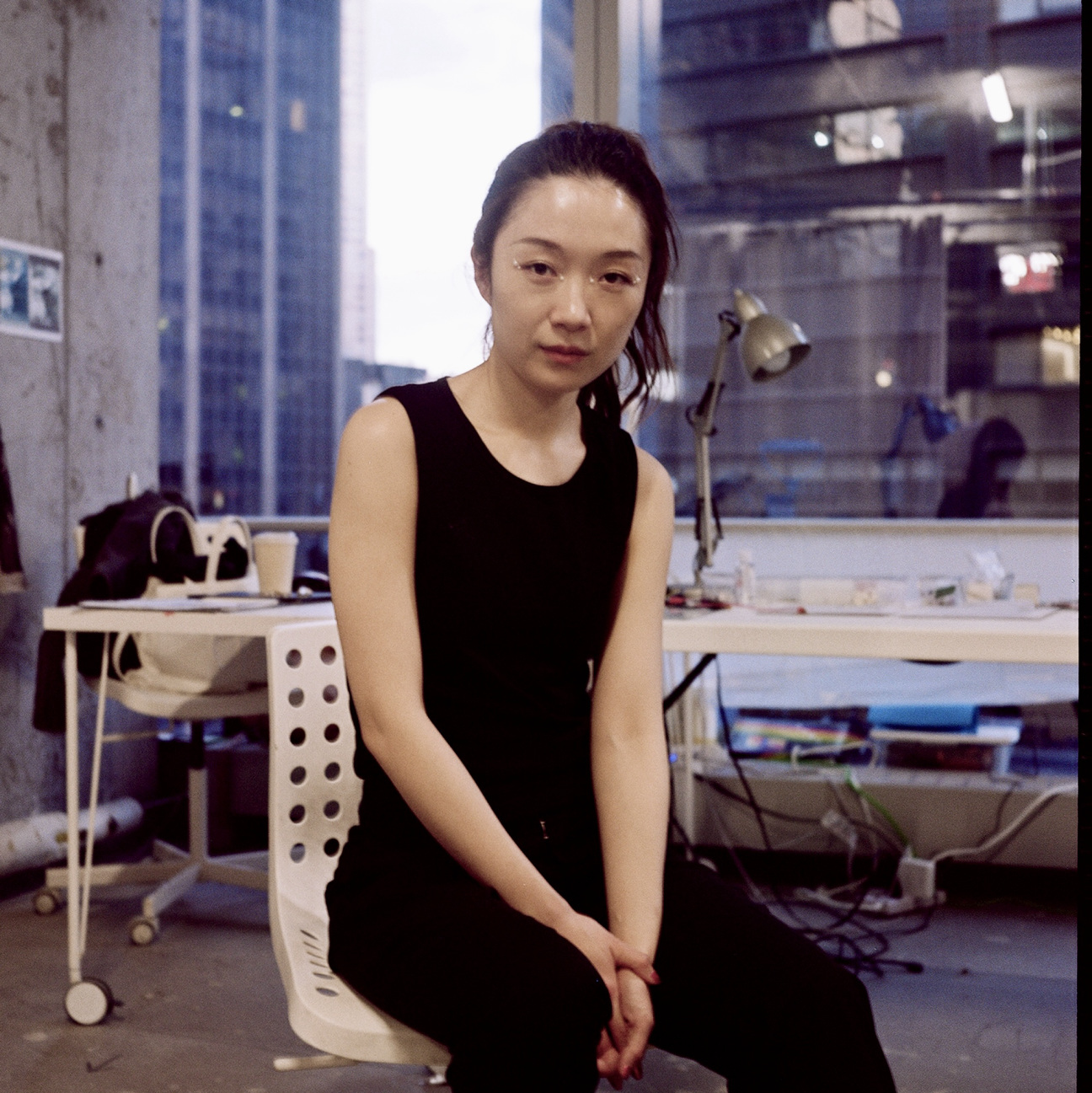Artist Xin Liu believes the universe is like a diner: if you don’t tell the waiter what you want, how will they know to fire it in the kitchen? If you don't order, you're never going to eat—and that is why Liu always asks. Her prayers are not bigger or more absurd than other people’s, but they might be more specific. She’s not a pedant per se, just someone who likes poking holes in the expected to entertain herself and, hopefully, others too.
One of her wishes was to send one of her wisdom teeth to space, an homage to the Japanese anime series, Neon Genesis Evangelion, and her belief that if we ever leave this earth, it will be as something as cold and dead as the vacuum of space or a tooth. She checked off that dream in 2019 using Bezos’s Blue Origin rocket.
In 2020, she asked to see her X chromosome printed out like The Iliad to see how much data was being carried around in every single one of her cells. “32 gigabytes of text doesn’t even fit on a hard drive,” she giggles. Yet her whole studio is more or less made up of hard drives—at least this version of it: a temporary walled space inside New York’s 4 World Trade Center where she is a Silver Art Projects resident. We are looking out at a slice of downtown skyscrapers as she lists the institutions she’s crashed with over the recent stretch: Queens Museum, Pioneer Works, The Museum of Arts and Design. But her order of the moment isn’t another temporary laboratory, it’s a side of permanence, a place to call studio for real.

Until our visit was interrupted, Liu was working on an embroidery project, which she’s recently thrown over her computer for. She’s finding pages with code related to certain biological traits and then threading her own panels of colorful memories on top. It’s the physical equivalent two people describing the same incidence at once. Sometimes she throws herself into these craft like trances—drawing, making, collaging. Other times, Liu’s campaigning for funding or glued to the laboratory for research and testing.
No matter what part in the process she’s mining, physical objects are always being produced and intersecting a practice that is mostly made of gestures and sometimes-souvenirs like an embroidered piece of DNA or a tiny untouchable tooth orbiting space. I think about Bas Jan Ader and Tehching Hsieh, artists for whom impulsive acts and consistent intent are codependent. Maybe in a way Liu is more like Ader because even despite the technological ambitions and scientific entanglement of her work, she is not just a guy setting off in the Ocean Wave but a competent seaman that can hold her own as a trained engineer, RISD graduate and the current MIT Media Lab Space Exploration Initiative Arts curator.
These kinds of art historical comparisons also allow the work to be seen through the lens of the performer, which she is, it's just that sometimes she choreographs with machines and the performances are more or less unwatchable save for the few documents or morsels they produce that we see in a gallery. This helps me understand why Liu is looking for something steadier: she wants a laboratory as generous as her plays but also the privacy to not be so on all the time in her work, which can start on any whim. Her current obsession to have fun—a trip to Antarctica to study the potentially lethal microbes frozen by melted ice caps, for instance—was inspired by the plot of a The Falcon and the Winter Soldier episode that spiked her and her husband's radar during COVID.

Death is a constant theme in Liu’s work but so is the Sisyphean fight for life. In October, the artist is taking part in another mission to space, sending a new plastic-eating bacteria up to break down waste and turn it into fashion-ready nylon monomers. She’s working on the project with the National Renewable Energy Laboratory, and they are up for a $1,000,000 grant. It’s these academic stakes and bureaucratic hoops that add desired abstract dimensions to Liu’s practice but ultimately let her challenge science’s rigid idea of itself. “A lot of my work there is also hardcore science because I'm interested in that almost like a painter is interested painting,” she says adding, “and we are always talking about death, right? There's also another side of it, this metabolic thing. After COVID, I started working a little bit more around living organisms. Maybe I just needed a little more hope. [chuckles].” We are glad to have Liu on the side of the living, if only for the jokes she makes that will still be good when we are dead—NFTs, wisdom tooth satellites and all. We would order more work like hers if we could.










 in your life?
in your life?

